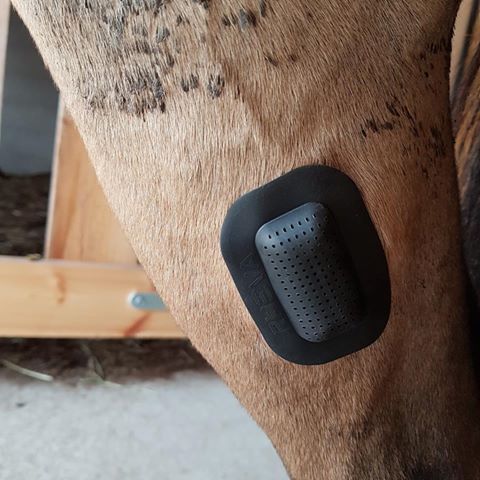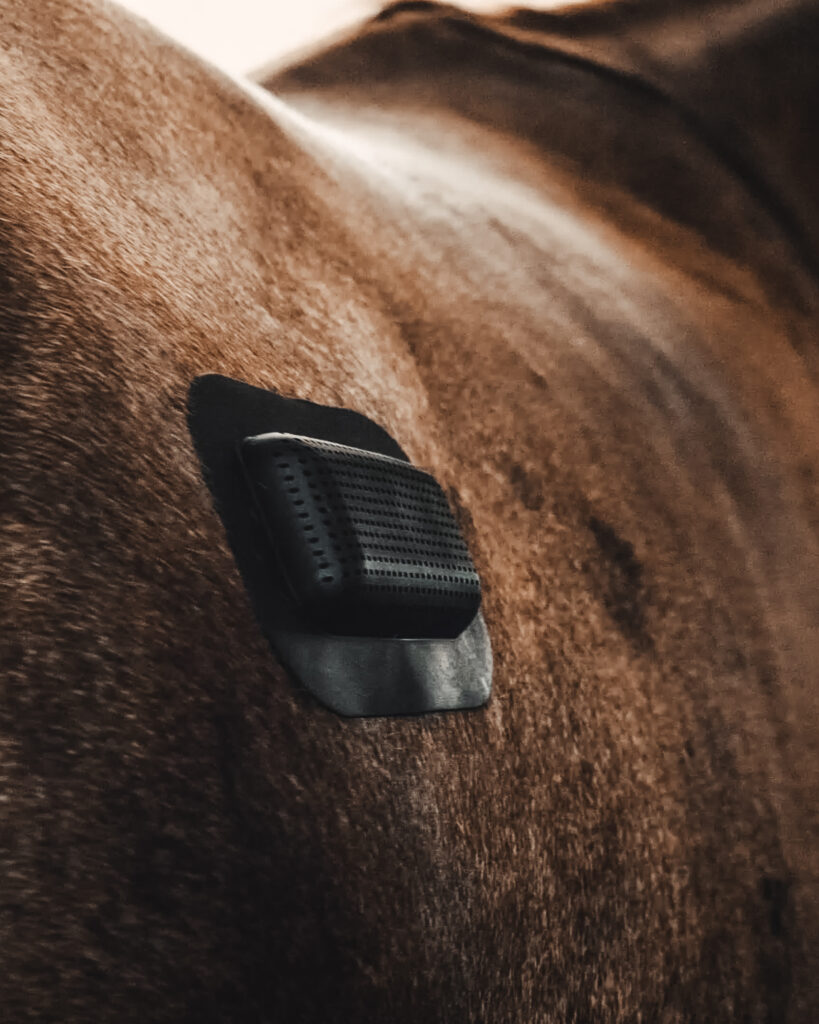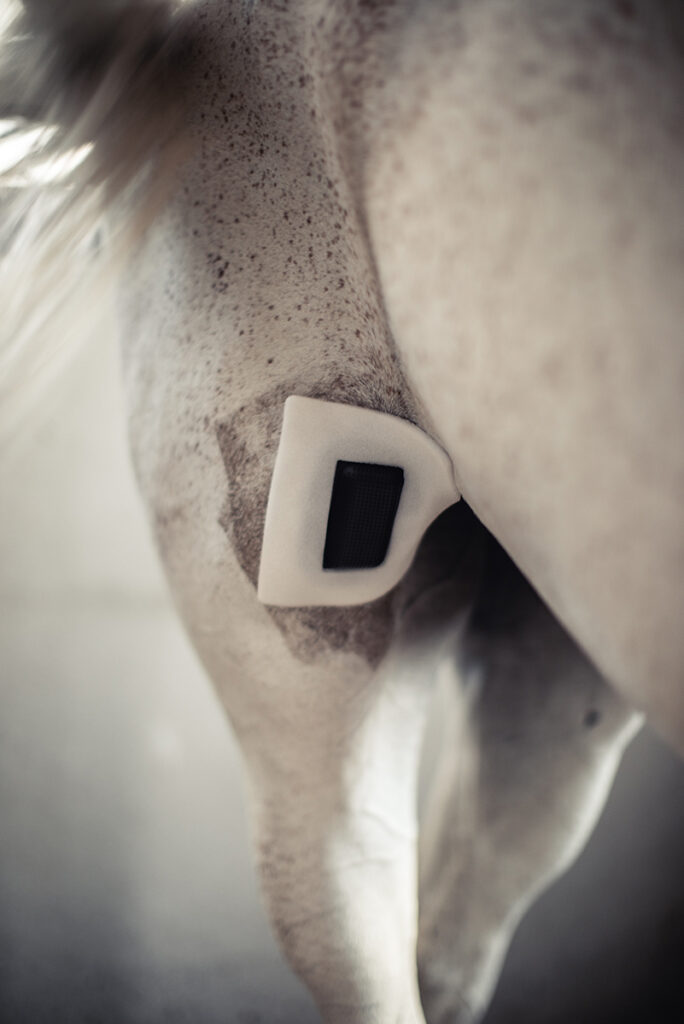In English
In English
RHEVA – Medical Band-Aid
RHEVA is a Swedish innovation. It all started when a horse got an injury on the knee on one of his front legs. It was not possible for the veterinarian to stitch the wound and he gave us the advice ”to solve the problem”. And so we did!
By cutting a piece of net from a fly hood, placing it over the wound and getting the net to stick with elastic tape, the idea to RHEVA was born. A few years later we started our own business and the production of RHEVA medical band-aid was up and running.
RHEVA has now been on the market for some years in Sweden and has gained good verdicts from users, both veterinarians, professional horse businesses and private horse owners.
We all want our animals to heal wounds in a gentle way and we also want to worry less about taking care of open wounds. RHEVA can be the solution to this with its new unique way of taking care of wounds. It is also ideal for protecting surgical stitches the first critical days.
On some parts of the horse it can be quite difficult to make RHEVA fasten properly because there is a lot of movement under the fur. For example where there is a large muscle or a joint under, like on the neck, legs and hock.
On these areas it can be necessary to complete RHEVA with the Extra-attachment to make sure t stay properly in place. You can also use sport tape or elastic bandages around the RHEVA.
Before using RHEVA we recommend you to carefully read the instructions.

RHEVA Medical Band-Aid is a PATENTED and PATTERNED PROTECTED product.
Manufactured by Cenova AB in Mjölby. The tape / adhesive comes from Stokvis Tapes in Norrköping.
All material used in product is medically classed.
Read this before using RHEVA

1. Clean the wound area carefully with clean water or saline solution. If the wound is heavily infected contact a veterinarian.
2. Make sure the area where the band-aid is going to stick is properly clean and dry. A clean and dry surface is vital to get the band-aid to fasten, no matter if you use the Extra-Attachment or not.
Fat and substances from styling sprays, conditioners, insect repellents etc can be removed with fat soluble wipes. Dry the area thoroughly after cleaning with a clean cloth.
We also recommend using a clothes roller/brush or duck tape on the fur to get rid of loose hair, small pieces of dirt and other filth that doesn’t meet the eye.
3. Avoid touching the area around the wound where the band-aid is going to stick, the glue instantly sticks to the fur. When the band-aid is in place, press with your fingers carefully on the tape-area for a minute. This helps the glue to attach even better. Full attachment comes after a couple of hours, therefore we recommend keeping the horse still and calm for some time after fastening your RHEVA.
4. Remove the RHEVA by pulling carefully in the direction of the fur.
Good to know:
- To minimize risk for infection RHEVA wound protection should be placed over the wound as soon as possible after the incident has occurred.
- Do inspect the wound protection every day, smell on it for infection hints. If you do smell something and suspect infection you might need to clean the wound again and put on a new RHEVA. This is way there are two RHEVA in the package.
- Avoid strong chemicals – they disturb wound healing. If the wound is lightly infected, clean with saline solution. If saline solution is not helping you might need to try a Disinfecting Solution (follow the instructions closely when using disinfection) or contact your veterinarian.
- Most common reason for the RHEVA to come/fall off is that fur is not properly clean and dry. Tiny particles of dust, dirt and grease in the fur can hinder the band-aid from attaching heartily.
- Some parts on the horse is harder to fasten the RHEVA on because there is a lot of movement in the fur. For example places where there is a large muscle or a joint under like on the neck, legs and hock. On these areas an Extra-Attachment can be of help. You can also use sport tape or elastic bandages around the RHEVA.
- Sometimes the band-aid needs to be changed more often depending on different factors like the state of the wound and if the horse is moving a lot. Tough weather conditions and long fur can also harden the situation. Some horses themselves offer challenges, maybe they lika to remove the band-aid themselves or getting ”help” from a friend in the paddock.
- The protection is non-contact with the wound and creates a calm environment. Wounds usually heal best if they are a little moist, especially at the beginning of the wound healing process. RHEVA counteracts dehydration of the wound.
I most cases Rheva wound protection works very good if the instructions in this paper is closely followed. Do not hesitate to get in touch with us or your retailer if you have questions or need advice and support. We are also very glad if you let us know how the Rheva has worked in your own particular case.

Sticks to & stays on fur.
Protects from insects & risks of infection.
Provides an optimal healing environment.
Withstand moisture.
The materials used in the product – plastic and adhesive – are medically classified.
Questions or support? Contact us!
Please do remember that you can always contact the RHEVA-team for support and advice by emailing info@rheva.se.
We are very concerned that you get the most out of using RHEVA and to help all our fur darlings healing properly.
